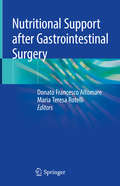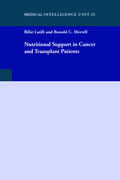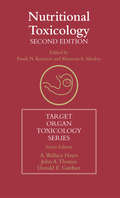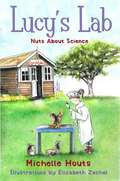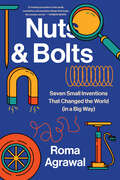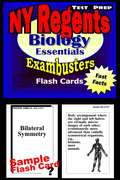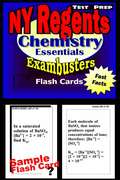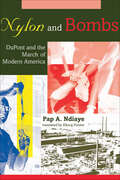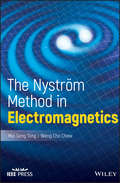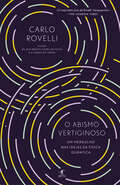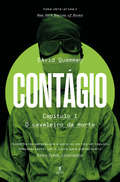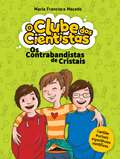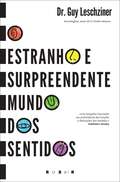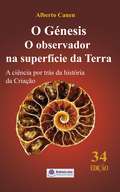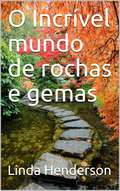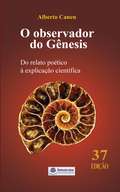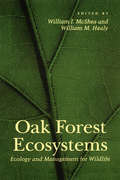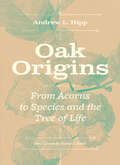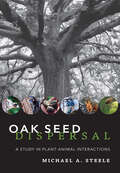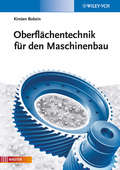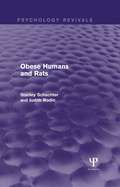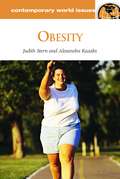- Table View
- List View
Nutritional Support after Gastrointestinal Surgery
by Donato Francesco Altomare Maria Teresa RotelliThis volume provides readers with the necessary information to select the most appropriate nutritional support following gastrointestinal tract surgery.Most patients are worried about resuming oral intake, particularly when the surgery has altered the GI tract normal physiology removing organs (e.g. total colectomy) or part of them, or modifying the natural sequence of the different GI tract parts (e.g. after esophagectomy or pancreatectomy). Patients may also worry about the possible complications of an inappropriate alimentation. As a matter of fact, several metabolic processes can be modified by GI tract surgery (e.g. major liver resection or pancreatectomy), thus making the nutritional support essential: and the same support is fundamental in bariatric surgery, nowadays widely used for super-obese patients. There is therefore a need for a nutritional guide in surgery and in troubleshooting postoperative cases where nutrition is a major issue This book offers nutritionists insights into the possible alterations of GI tract physiology occurring after surgery, and will be a valuable resource for surgeons, gastroenterologists, coloproctologists, nutritionists and clinical specialist nurses, seeking guidance on postoperative nutrition.
Nutritional Support in Cancer and Transplant Patients
by Rifat Latifi Ronald C. MerrellMuch has been learned, great developments have occurred, and so much has been written about cancer and transplantation in the last 2-3 decades. Yet, to the author's knowledge, no monograph or book has addressed nutrition support of cancer and transplant patients together. Experts from the around the world have addressed the nutrition support in cancer and transplant patients in this unique monograph. The book is divided in two parts: Part I deals with nutrition support in cancer patients, including the specific role of nutrition on immunity, cancer cachexia, and the role of different substrates. Part II addresses nutrition in transplant patients. The first two chapters deal with the immunologic role of nutrition and cancer cachexia. Chapter 3 elegantly and extensively reviews the nutritional implications; its biochemistry and the role of one of the most studied amino acids in clinical practiceNglutamine. This is followed by two chapters of nutrition support of patients with head and neck cancer and nutrition support of patients with gastrointestinal cancer. Chapters 6 and 7 review the role of total parenteral nutrition on perioperative nutritional support and cell cycle kinetics. While the plasma amino acids profile in cancer patients and the role of L-methionine is addressed in great details in Chapters 8 and 9, the role of ornithine alpha-ketoglutarate administration on surgical, trauma and cancer-bearing patients is reviewed on Chapter 10. Part Two of this book starts with the review of nutritional support in small bowel transplantation. This Section elegantly describes the process of recovery of small bowel from the ischemia and preservation, weaning from parenteral nutrition support and establishment of normal diets. In addition monitoring techniques and the nutritional complications of surgical intervention is described. Chapter 12 on liver failure and liver transplant patients addresses hepatic encephalopathy and the role of certain amino acids, nutrition assessment techniques and metabolic changes following liver transplantation. Furthermore, it offers some practical advice on how to establish nutrition support routes in these very ill patients. Nutrition support in renal transplantation, including metabolic abnormalities in renal failure, are described on Chapter 13. This monograph ends with a Chapter on total parenteral nutrition in bone marrow transplant patients.
Nutritional Toxicology
by Frank N. Kotsonis Maureen A. MackeyNutrients are gaining recognition for their role in protecting against the toxic effects of free radicals, alcohol and other substances. At the same time, advances in food technology, the appearance of novel foods and new ingredients have generated new toxicological issues and forced health and safety professionals to develop new and more reliable
Nutritional Toxicology
by Lishi ZhangThis book provides a broad overview of the chemicals in food that have the potential to induce adverse health effects. Nutritional Toxicology is an interaction of nutrition, toxicology, biochemistry and food science, etc. Its main research scope involves the effects of nutrients on metabolisms of toxicants and their mechanisms, the interaction of the toxicants and contaminants originated from diet with nutrients and nutrition process, the adverse health outcome of nutrients excess, as well as methodology of research and related food and nutrition regulation process. Also the risk assessment of toxicants and contaminants in foods, and risk benefit assessment of nutrients (dietary supplementation) has become an emerging topic. This book provides novel and provocative insights into the fields of nutrition, food science and toxicology. It also offers a state-of-the-art report on recent discoveries concerning nutritional toxicology and where the field is going. It mainly focuses on advances made over the past 20 years. It will benefit graduate students, researchers and food and nutrition related regulation parties.
Nuts About Science: Lucy's Lab #1 (Lucy?s Lab)
by Michelle Houts Elizabeth ZechelOn Lucy’s first day of second grade, she’s excited to meet her new teacher, Miss Flippo, and find out everything’s she’s going to learn about this year in school. And when Miss Flippo tells the class that they’re going to have their very own science lab, complete with lab coats and goggles, Lucy can’t wait to start exploring.But one thing is troubling her. The tree that sat outside her first grade classroom all year is gone. Where are the squirrels going to live? Inspired by her classroom lab, Lucy starts her own research mission to find out what happened to the tree, and then to lobby for the school to plant a new one. With the help of her cousin, Cora, and their new classmates, Lucy discovers that science is everywhere you look, and a lab can be anywhere you look.Launching a new chapter book series from IRA Children’s Book Award-winner, Michelle Houts, Lucy Saves Some Squirrels draws on STEM themes and is aligned with curriculum guidelines to bring a love of science to young readers, inspiring them to start their own labs and explore their world.
Nuts and Bolts: Seven Small Inventions That Changed The World In A Big Way
by Roma AgrawalShortlisted for the 2023 Royal Society Science Book Prize “A riveting love letter to the small, wonderful, and mundane things that make the modern world.”—Roman Mars A structural engineer examines the seven most basic building blocks of engineering that have shaped the modern world. Some of humanity’s mightiest engineering achievements are small in scale—and, without them, the complex machinery on which our modern world runs would not exist. In Nuts and Bolts, structural engineer Roma Agrawal examines seven of these extraordinary elements: the nail, the wheel, the spring, the magnet, the lens, the string, and the pump. Tracing the evolution from Egyptian nails to modern skyscrapers, and Neanderthal string to musical instruments, Agrawal shows us how even our most sophisticated items are built on the foundations of these ancient and fundamental breakthroughs. She explores an array of intricate technologies—dishwashers, spacesuits, microscopes, suspension bridges, breast pumps—making surprising connections, explaining how they work, and using her own hand-drawn illustrations to bring complex principles to life. Alongside deeply personal experiences, she recounts the stories of remarkable—and often uncredited—scientists, engineers, and innovators from all over the world, and explores the indelible impact these creators and their creations had on society. In preindustrial Britain, nails were so precious that their export to the colonies was banned—and women were among the most industrious nail makers. The washing machine displayed at an industrial fair in Chicago in 1898 was the only machine featured that was designed by a woman. The history of the wheel, meanwhile, starts with pottery, and takes us to India’s independence movement, where making clothes using a spinning wheel was an act of civil disobedience. Eye-opening and engaging, Nuts and Bolts reveals the hidden building blocks of our modern world, and shows how engineering has fundamentally changed the way we live.
NY Regents Exam Test Prep Flash Cards: Biology Essentials (Exambusters NY Regents Workbook #2)
by Ace Inc.<P><P><i>Advisory: Bookshare has learned that this book offers only partial accessibility. We have kept it in the collection because it is useful for some of our members. Benetech is actively working on projects to improve accessibility issues such as these.</i><P><P> 450 questions and answers. Essential definitions and concepts.<P><P> Topics: Cells, Biochemistry and Energy, Evolution and Classification, Kingdoms: Bacteria, Fungi, Protista; Kingdom: Plantae, Kingdom: Animalia, Human Locomotion, Human Circulation and Immunology, Human Respiration and Excretion, Human Digestion, Human Nervous System, Human Endocrinology, Reproduction and Development, Genetics, Ecology <P>"Exambusters NY Regents Prep Workbooks" provide comprehensive NY Regents review--one fact at a time--to prepare students to take practice NY Regents tests. Each NY Regents study guide focuses on fundamental concepts and definitions--a basic overview to begin studying for the NY Regents exam. Up to 600 questions and answers, each volume in the NY Regents series is a quick and easy, focused read. Reviewing NY Regents flash cards is the first step toward more confident NY Regents preparation and ultimately, higher NY Regents exam scores!
NY Regents Exam Test Prep Flash Cards: Physics Essentials (Exambusters NY Regents Workbook #4)
by Ace Inc.<P><P><i>Advisory: Bookshare has learned that this book offers only partial accessibility. We have kept it in the collection because it is useful for some of our members. Benetech is actively working on projects to improve accessibility issues such as these.</i><P><P> 600 questions and answers. Essential definitions, formulas, concepts, and sample problems. <P><P>Topics: Measurement, Motion and Forces, Work and Energy, Heat and Gases, Atoms, Fluids, Sound, Light and Optics, DC Circuits, Magnetism, AC Circuits <P>"Exambusters NY Regents Prep Workbooks" provide comprehensive NY Regents review--one fact at a time--to prepare students to take practice NY Regents tests. Each NY Regents study guide focuses on fundamental concepts and definitions--a basic overview to begin studying for the NY Regents exam. Up to 600 questions and answers, each volume in the NY Regents series is a quick and easy, focused read. Reviewing NY Regents flash cards is the first step toward more confident NY Regents preparation and ultimately, higher NY Regents exam scores!
NY Regents Test Prep Flash Cards: Chemistry Essentials (Exambusters NY Regents Workbook #3)
by Regents Exambusters700 questions and answers. Essential definitions, formulas, concepts, and sample problems.<P><P> Topics: Introduction, Matter, Atoms, Formulas, Moles, Reactions, Elements, Periodic Table, Electrons, Chemical Bonds, Heat, Gases, Phase Changes, Solutions, Reaction Rates, Equilibrium, Acids and Bases, Oxidation and Reduction, Introduction to Organic Chemistry, Radioactivity <P>"Exambusters NY Regents Prep Workbooks" provide comprehensive NY Regents review--one fact at a time--to prepare students to take practice NY Regents tests. Each NY Regents study guide focuses on fundamental concepts and definitions--a basic overview to begin studying for the NY Regents exam. Up to 600 questions and answers, each volume in the NY Regents series is a quick and easy, focused read. Reviewing NY Regents flash cards is the first step toward more confident NY Regents preparation and ultimately, higher NY Regents exam scores!
Nylon and Bombs: DuPont and the March of Modern America (Studies in Industry and Society)
by Pap A. NdiayeWhat do nylon stockings and atomic bombs have in common? DuPont. The chemical firm of DuPont de Nemours pioneered the development of both nylon and plutonium, playing an important role in the rise of mass consumption and the emergence of the notorious "military-industrial complex." In this fascinating account of the lives and careers of Du Pont’s chemical engineers, Pap A. Ndiaye deftly illustrates the contribution of industry to the genesis of a dominant post–World War II "American model" connecting prosperity with security.The consumer and military dimensions of twentieth-century American history are often studied separately. Ndiaye reunites them by examining Du Pont's development of nylon, which symbolized a new way of life, and plutonium, which was synonymous with annihilation. Reflecting on the experiences and contributions of the company's engineers and physicists, Ndiaye traces Du Pont's transformation into one of the corporate models of American success.
Nylon and Bombs: DuPont and the March of Modern America (Studies in Industry and Society)
by Pap A. NdiayeHow the chemical engineering behemoth that brought us Teflon, Kevlar, Lycra, Freon, and more shaped the culture of postwar America. What do nylon stockings and atomic bombs have in common? DuPont. The chemical firm of DuPont de Nemours pioneered the development of both nylon and plutonium, among countless other innovations, playing an important role in the rise of mass consumption and the emergence of the notorious &“military-industrial complex.&” In this fascinating account of the lives and careers of Du Pont&’s chemical engineers, Pap A. Ndiaye deftly illustrates the contribution of industry to the genesis of a dominant post–World War II &“American model&” connecting prosperity with security. The consumer and military dimensions of twentieth-century American history are often studied separately. Ndiaye reunites them by examining Du Pont&’s development of nylon, which symbolized a new way of life, and plutonium, which was synonymous with annihilation. Reflecting on the experiences and contributions of the company&’s engineers and physicists, Ndiaye traces Du Pont&’s transformation into one of the corporate models of American success.</
The Nystrom Method in Electromagnetics (Wiley - IEEE)
by Mei Song Tong Weng Cho ChewA comprehensive, step-by-step reference to the Nyström Method for solving Electromagnetic problems using integral equations Computational electromagnetics studies the numerical methods or techniques that solve electromagnetic problems by computer programming. Currently, there are mainly three numerical methods for electromagnetic problems: the finite-difference time-domain (FDTD), finite element method (FEM), and integral equation methods (IEMs). In the IEMs, the method of moments (MoM) is the most widely used method, but much attention is being paid to the Nyström method as another IEM, because it possesses some unique merits which the MoM lacks. This book focuses on that method—providing information on everything that students and professionals working in the field need to know. Written by the top researchers in electromagnetics, this complete reference book is a consolidation of advances made in the use of the Nyström method for solving electromagnetic integral equations. It begins by introducing the fundamentals of the electromagnetic theory and computational electromagnetics, before proceeding to illustrate the advantages unique to the Nyström method through rigorous worked out examples and equations. Key topics include quadrature rules, singularity treatment techniques, applications to conducting and penetrable media, multiphysics electromagnetic problems, time-domain integral equations, inverse scattering problems and incorporation with multilevel fast multiple algorithm. Systematically introduces the fundamental principles, equations, and advantages of the Nyström method for solving electromagnetic problems Features the unique benefits of using the Nyström method through numerical comparisons with other numerical and analytical methods Covers a broad range of application examples that will point the way for future research The Nystrom Method in Electromagnetics is ideal for graduate students, senior undergraduates, and researchers studying engineering electromagnetics, computational methods, and applied mathematics. Practicing engineers and other industry professionals working in engineering electromagnetics and engineering mathematics will also find it to be incredibly helpful.
O abismo vertiginoso: Um Mergulho nas Ideias da Física Quântica
by Carlo RovelliDo autor de Sete breves lições de Física e A ordem do tempo, uma viagem fascinante pelas ideias vertiginosas da teoria quântica. Uma história de rara beleza, imprescindível para a compreensão do nosso lugar no Universo. Uma perspetiva surpreendente da teoria quântica, do autor de Sete breves lições de física e A ordem do tempo. Em Helgoland, uma ilha no Mar do Norte, no mês de junho de 1925, o jovem físico alemão Werner Heisenberg pôs em marcha a mais radical revolução científica do nosso tempo: a física dos quanta. Um rasgo de génio com quase um século, que descreve na perfeição o mundo que observamos, da cor do céu aos neurónios do nosso cérebro, do funcionamento dos computadores à origem das galáxias, e que está, também, na origem de inúmeras descobertas e avanços tecnológicos. Aliando ciência, filosofia e história, Carlo Rovelli reconstrói com admirável clareza o controverso debate em torno do sentido desta teoria, argumentando que as suas aparentes contradições podem ser explicadas com uma mudança radical de perspetiva: tudo o que existe é fundamentalmente composto, não por matéria, mas por interações. Uma interpretação arrojada, por um dos físicos mais brilhantes da atualidade, que sugere que a realidade é muito diferente daquilo que imaginamos. «O mais belo livro de Rovelli. Inesquecível.» The London Times «Rovelli é um génio, um comunicador incrível. É aqui que a ciência ganha vida.»Neil Gaiman «Um dos mais profundos, elegantes e lúcidos intérpretes dos fascinantes enigmas da sua disciplina para o leitor comum. Um livro grandioso.»John Banville, The Wall Street Journal
«O cavaleiro da morte»: Capitulo I do livro Contágio, história dos vírus que estão a mudar o mundo
by David Quammen«Uma obra-prima.» New York Review of Books Uma investigação ao melhor estilo policial sobre o fenómeno do contágio de humanos por vírus de outras espécies animais - como o novo coronavírus - e o que podemos aprender com as principais pandemias da história. Neste capítulo de Contágio, David Quammen analisa em pormenor o processo de spillover - quando infecções provocadas por vírus do reino animal migram para os humanos - a partir do caso intrigante do vírus Hendra. O relato da investigação para encontrar a origem do vírus é apaixonante e cruza-se inevitavelmente com a forma displicente como a Humanidade tem interagido com o meio-ambiente. Este capítulo é retirado do livro Contágio, uma história do vírus que estão a mudar o mundo, uma obra fascinante de jornalismo científico que previu a pandemia do novo coronavírus que vivemos hoje.
O Clube dos Cientistas 1: Os Contrabandistas de Cristais
by Maria Francisca MacedoÉs curioso e fascinado por ciência? Então vem conhecer O Clube dos Cientistas! A Catarina, o Chico e o Carlos são três irmãos curiosos, fascinados pela ciência e sempre em busca de mistérios. Vais divertir-te a ler as suas histórias empolgantes e cheias de ação! Se fores como eles, não vais resistir a ler o Caderno de Experiências até ao fim e pôr mãos à obra. O fumo numa cabana abandonada despertou a curiosidade dos três irmãos. O que começou por ser apenas uma brincadeira, transformou-se numa grande aventura! Conseguirão eles resolver o mistério que têm em mãos? Junta-te ao Clube dos Cientistas e vem descobrir Os Contrabandistas de Cristais! Autora distinguida pelo GLOBAL TEACHER PRIZE 2018 (Prémio para o Melhor Professor de Portugal), com uma Menção Honrosa pelo elevado contributo para a Educação e Sustentabilidade Social.
O Estranho e Surpreendente Mundo dos Sentidos
by Guy LeschzinerCOMO OS SENTIDOS MOLDAM A NOSSA PERCEÇÃO DO MUNDO Os nossos sentidos são vitais para a compreensão de tudo o que nos rodeia. Eles enriquecem as nossas experiências de vida e são parte integrante das nossas memórias. No entanto, são falíveis e inconsistentes, vulneráveis a diferenças entre indivíduos e a doenças, pelo que aquilo que consideramos ser real não é mais do que uma reconstrução complexa, uma realidade virtual criada pelo nosso cérebro. A verdade é que os nossos sentidos podem trair-nos, oferecendo-nos a sua própria interpretação do que podemos ver, ouvir, cheirar, tocar ou sentir. Neste livro, o Dr. Guy Leschziner, um conceituado neurologista, apresenta-nos histórias reais e extraordinárias de pessoas cujos sentidos foram alterados de alguma forma, com consequências inesperadas e por vezes devastadoras: pessoas a quem as palavras ativam as papilas gustativas, produzindo um verdadeiro sabor; pessoas cegas que têm uma visão pormenorizada e vívida; pessoas para quem as sensações de quente e frio se invertem. Estes relatos surpreendentes demonstram as limitações dos sentidos, a sua dependência do bom funcionamento do nosso sistema nervoso e, mais importante, o modo como a perceção do mundo pode ser bastante diferente da realidade para cada um de nós. «Um mergulho fascinante nas profundezas das funções e disfunções dos sentidos.» Publishers Weekly «Um livro profundamente comovente e poderoso, repleto de ideias provocadoras sobre a perceção humana e a forma como construímos a realidade.» DANIEL M. DAVIS, autor de O Incrível Sistema Imunitário «Um livro intenso, divertido e excecional. O professor Leschziner conduz-nos numa viagem de exploração dos nossos sentidos, fazendo-nos questionar a natureza da nossa realidade e a forma como interpretamos o mundo que nos rodeia.» Dr. Alistair Stanhouse, psiquiatra e autor de Head First «Através de histórias vívidas de doenças que afetam os nossos sentidos, o professor Leschziner faz uma análise profunda da imensidão de experiências sensoriais presentes em todos os momentos das nossas vidas, mas de que quase não estamos conscientes. Uma fantástica abordagem da neurociência à compreensão dos sentidos.» Allan Ropper, autor bestseller internacional «Fiquei encantada desde o primeiro parágrafo. Através de histórias reais sobre o que acontece quando a nossa frágil perceção do mundo que nos rodeia é afetada, o Dr. Guy Leschziner liga-nos de novo aos nossos sentidos.» Professora Alice Roberts, autora, anatomista e antropóloga
O Génesis O observador na superfície da Terra A ciência por trás da história da Criação
by Alberto Canen Micaela NóbregaMais de 380,000 livros vendidos! O Génesis, os sete dias, a Criação ... de onde vem o texto que compõe a primeira parte da Bíblia? E este texto…é apenas um poema introdutório ... ou é uma narrativa? O que está por trás das suas palavras? Alberto Canen encontrou uma forma alternativa de dar resposta a estas e outras questões contidas no Génesis. Ele encontrou uma rota pela qual nunca ninguém viajou e convida o leitor a acompanhá-lo e a partilhar com ele as suas descobertas. O autor descobriu que, oculto no meio daquele enredo há alguém. Alguém que observa, alguém que narra. Alguém que narra o que observa. E um lugar, um lugar a partir do qual observar. A localização do observador. A chave para um enigma emocionante. O Génesis tem sido um mistério há milhares de anos. Não foi possível entender completamente do que falava o texto. Se era apenas um poema introdutório para as Sagradas Escrituras, ou se realmente continha informações sobre a Criação. O texto do Génesis dividiu as águas entre os criacionistas e os cientistas por um longo período, até hoje. Com este livro, espero que esta separação entre cientistas e criacionistas seja diluída já que descobri a chave que unifica ambos os mundos. Eu acredito que esta chave para o mistério do Génesis é compreender que é narrado por alguém. Um narrador do Génesis. Aquele que observa a visão que Deus lhe dá e, a partir daí, narra o que observa e fá-lo a partir de sua localização humana e terrena. Esta localização terrena e precisa é a chave para a compreensão de Génesis.
O Incrível mundo de rochas e gemas
by Linda HendersonJonas vai fazer um passeio e procurar por pequenas rochas, mas encontra muito mais do que procurava. Ele encontra um amigo muito especial ao longo do caminho. Se você tem interesse em saber mais sobre rochas, este livro explica as diferenças entre os três tipos básicos de rochas Ígneas, sedimentares e metamórficas. O livro também contém lindas imagens para crianças dos 7 aos 9 anos de idade.
O observador do Gênesis: Do relato poético à explicação científica
by Alberto CanenMais de 400,000 livros vendidos! O Gênesis, os sete dias, a Criação ... de onde vem o texto que compõe a primeira parte da Bíblia? O seu texto é apenas um poema introdutório ... ou é uma narrativa? O que há por trás de suas palavras? Alberto Canen encontrou uma maneira alternativa de responder a essas e outras questões contidas no Gênesis. Ele encontrou uma rota pela qual ninguém havia viajado antes e convida o leitor a passar por ele e realizar suas descobertas com ele. O autor descobriu que escondido no fundo da trama há alguém. Alguém que observa, alguém que narra. Alguém que narra o que ele observa. E um lugar, um lugar para observar. A localização do observador. A chave para um quebra-cabeça emocionante. Gênesis tem sido um mistério há milhares de anos. Não foi possível entender o que o texto estava falando. Se fosse apenas um poema introdutório das Sagradas Escrituras, ou se contivesse realmente informações sobre a Criação. O texto de Gênesis dividiu as águas dos criacionistas e cientistas por um longo tempo até hoje. Com este livro, espero que esta separação entre cientistas e criacionistas seja diluída desde que descobri a chave que unifica os dois mundos. Eu acho que a chave para o mistério do Gênesis é entender que ele é narrado por alguém. Um narrador de Gênesis. Aquele que observa a visão que Deus lhe dá e de lá narra o que ele observa e observa de sua localização humana e terrena. Esta localização terrena e precisa é a chave para entender o Gênesis.
Oak Forest Ecosystems: Ecology and Management for Wildlife
by William J. McSheaOak Forest Ecosystems focuses on the relationship between an oak forest's acorn yield and species of wildlife that depend on it. It begins by treating factors such as oak distribution, forest fires, tree diseases and pests, dynamics of acorn production, and acorn dispersal by birds and mammals. Special consideration is given to the phenomenon of masting—whereby oaks in a given area will produce huge crops of acorns at irregular intervals—a key component for wildlife researchers and managers in understanding patterns of scarcity and abundance in the creatures that feed on this crop. Relationships between oaks and animals such as mice, squirrels, turkeys, deer, and bear are discussed, as are the differences between eastern, southern Appalachian, southwestern, and California oak forests. Contributors: Marc D. Abrams, Pennsylvania State University • Patrick H. Brose, U.S. Department of Agriculture Forest Service • John P. Buonaccorsi, University of Massachusetts • Daniel Dey, U.S. Department of Agriculture Forest Service • Joseph S. Elkinton, University of Massachusetts • George A. Feldhamer, Southern Illinois University • Peter F. Folliott, University of Arizona • Lee E. Frelich, University of Minnesota • Cathryn H. Greenberg, U.S. Department of Agriculture Forest Service • William M. Healy, U.S. Department of Agriculture Forest Service • Roy L. Kirkpatrick, Virginia Polytechnic Institute and State University • Johannes M. H. Knops, University of Nebraska • Walter D. Koenig, University of California • Nelson W. Lafon, Virginia Department of Game and Inland Fisheries • Andrew M. Liebhold, U.S. Department of Agriculture Forest Service • William J. McShea, National Zoological Park Conservation and Research Center • William H. McWilliams, U.S. Department of Agriculture Forest Service • Gary W. Norman, Virginia Department of Game and Inland Fisheries • Steven W. Oak, U.S. Department of Agriculture Forest Service • Renee A. O'Brien, U.S. Department of Agriculture Forest Service • Richard S. Ostfeld, Institute of Ecosystem Studies • Bernard R. Parresol, U.S. Department of Agriculture Forest Service • Peter J. Perkins, University of New Hampshire • Gordon C. Reese, Colorado State University • Peter B. Reich, University of Minnesota • Peter D. Smallwood, University of Richmond • Christopher C. Smith, Kansas State University • Richard B. Standiford, University of California–Berkeley • Martin A. Stapanian, Ohio Cooperative Wildlife Unit • Michael A. Steele, Wilkes University • David Steffen, Virginia Department of Game and Inland Fisheries • David H. Van Lear, Clemson University • Michael R. Vaughan, Virginia Polytechnic Institute and State University • Karen L. Waddell, U.S. Department of Agriculture Forest Service
Oak Origins: From Acorns to Species and the Tree of Life
by Andrew L. HippFrom ancient acorns to future forests, the story of how oaks evolved and the many ways they shape our world. An oak begins its life with the precarious journey of a pollen grain, then an acorn, then a seedling. A mature tree may shed millions of acorns, but only a handful will grow. One oak may then live 100 years, 250 years, or even 13,000 years. But the long life of an individual is only a part of these trees’ story. With naturalist and leading researcher Andrew L. Hipp as our guide, Oak Origins takes us through a sweeping evolutionary history, stretching back to a population of trees that lived more than 50 million years ago. We travel to the ancient tropical Earth to see the ancestors of the oaks evolving side by side with the dinosaurs. We journey from the oaks’ childhood in the once-warm forests of the Arctic to the montane cloud forests of Mexico and the broad-leaved evergreen forests of Southeast Asia. We dive into current research on oak genomes to see how scientists study genes’ movement between species and how oaks evolve over generations—spanning tens of millions of years. Finally, we learn how oak evolutionary history shapes the forests we know today, and how it may even shape the forests of the future. Oaks are familiar to almost everyone, and beloved. They are embedded in our mythology. They have fed us, housed us, provided wood for our ships and wine barrels and homes and halls, planked our roads, and kept us warm. Every oak also has the potential to feed thousands of birds, squirrels, and mice and host countless insects, mosses, fungi, and lichens. But as Oak Origins makes clear, the story of the oaks’ evolution is not just the story of one important tree. It is the story of the Tree of Life, connecting all organisms that have ever lived on Earth, from oaks’ last common ancestor to us.
Oak Seed Dispersal: A Study in Plant-Animal Interactions
by Michael A. SteeleThe definitive examination of oak forest evolutionary ecology.Seed dispersal is a critical stage in the life cycle of most flowering plants. The process can have far-reaching effects on a species' biology, especially numerous aspects of its ecology and evolution. This is particularly the case for the oaks, in which the dispersal of the acorn is tied to numerous tree characteristics, as well as the behavior and ecology of the animals that feed on and move these seeds to their final destination. Forest structure, composition, and genetics often follow directly from the dispersal process—while also influencing it in turn. In Oak Seed Dispersal, Michael A. Steele draws on three decades of field research across the globe (e.g., the United States, Mexico, Central America, Europe, and China) to describe the interactions between oaks and their seed consumers. Rodents, birds, and insects, he writes, collectively influence the survival, movement, and germination of acorns, as well as the establishment of seedlings, often indicating a coevolutionary bond between oaks and their seed consumers. This bond can only be understood by unraveling the complex interactions that occur in the context of factors such as partial seed consumption due to acorn chemistry, scatterhoarding, predation of the seed consumers by other organisms, and the limiting effects of masting on insect, rodent, and jay damage.Offering new insights on how animal-mediated dispersal drives ecological and evolutionary processes in forest ecosystems, Oak Seed Dispersal also includes an overview of threatened oak forests across the globe and explains how a lack of acorn dispersal contributes to many important conservation challenges. Highly illustrated, the book includes photographs of key dispersal organisms and tactics, as well as a foreword by Stephen B. Vander Wall, a leading authority on food hoarding and animal-mediated seed dispersal, and beautiful artwork by Tad C. Theimer, also an accomplished ecologist.
Oberflächentechnik für den Maschinenbau
by Kirsten BobzinTribologie, Korrosion, Konstruktion und Werkstofftechnik sind Wissensbereiche, die sich zunächst parallel entwickelt haben. Das gleiche gilt für die verschiedenen Verfahren der Oberflächentechnik. Heute wird es zunehmend wichtiger, interdisziplinäre Ansätze zu finden, um die Problemstellungen der Zukunft, wie z.B. Umweltschutz oder Ressourcenschonung, gemeinsam zu lösen. Das Buch verfolgt den Ansatz, diese Wissensbereiche zu verknüpfen. Es beginnt mit einer Beschreibung technischer Oberflächen hinsichtlich chemischer Zusammensetzung und geometrischer Struktur. Technische Systeme des Maschinenbaus (Bauteile oder Werkzeuge) sind Umgebungseinflüssen (Druck, Chemie, Temperatur) ausgesetzt, die zu Oberflächenschäden durch Verschleiß und Korrosion führen können. Um Oberflächen davor zu schützen, müssen die Grundlagen der Tribologie (Lehre von Reibung und Verschleiß) und Korrosion zunächst verstanden sein, weshalb die wichtigsten Begriffe und Definitionen zu Beginn des Buches beschrieben werden. Schwerpunkt des Buches ist die Behandlung der Verfahren der Oberflächentechnik, die im Maschinenbau Anwendung finden. Jedes Verfahren wird hinsichtlich Beschichtungsprozess, Anlagentechnik, Schichtwerkstoffen, typischen Schichtdicken, Beschichtungstemperaturen und Schichtwerkstoffen beschrieben und anhand von Anwendungsbeispielen vorgestellt. Wesentliches Element der Oberflächentechnik ist die Kombination unterschiedlicher Werkstoffe oder Werkstoffeigenschaften, um Volumen- und Oberflächeneigenschaften getrennt voneinander entsprechend der Anwendung optimieren zu können. Daher ist abschließend eine sehr kurze Einteilung wichtiger Werkstoffe gegeben (Metalle, Keramiken, Polymere). Die Kombination aus Tribologie, Korrosion, Verfahren der Oberflächentechnik und Werkstoffkunde ermöglicht eine strukturierte Herangehensweise bei der Auslegung von Oberflächen.
Obese Humans and Rats (Psychology Revivals)
by Judith Rodin Stanley SchacterOriginally published in 1974, this volume examines the behavioural similarities of obese humans and animals whose so-called feeding centre (the ventro-medial hypothalamic nuclei) has been lesioned. Both the obese human and the VMH-lesioned animal seem to share a hyposensitivity to the internal (physiological) cues to eating and hypersensitivity to external cues associated with food. Beginning with a review, these obese animals and the human obese are compared point by point on experimental results reported in the literature. Then, new findings are presented that specifically tested humans for relationships that are well-established for lesioned animals. Next, a theoretical framework integrates the human and animal data to postulate that the relationship of cue prominence and probability of response is stronger for the obese than for normal. The causes for this, and the extension of the basis for the obese’s eating behaviour to other areas, are discussed in light of further experiments that will make this invaluable reading for all concerned with the history of obesity and the issues of regulatory behaviour.
Obesity: A Reference Handbook
by Judith S. Stern Alexandra KazaksIn this reference, Stern and Kazaks, nutrition researchers at the U. of California, Davis, present information on the topic of obesity, including why people gain weight, why they succeed or fail in losing it, and who they believe is responsible. They cover its history, treatments, the controversy over whether it is a disease, healthy weight management, medications, herbs and supplements, surgery, the influence of food advertising, childhood obesity, and recent increases in obesity, and provide short biographies of key individuals, excerpts from documents, and an annotated list of resources and organizations.
